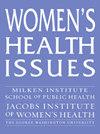Inequities in Adequacy of Prenatal Care and Shifts in Rural/Urban Differences Early in the COVID-19 Pandemic
IF 2.5
2区 医学
Q2 PUBLIC, ENVIRONMENTAL & OCCUPATIONAL HEALTH
引用次数: 0
Abstract
Background
Adequate prenatal care is vital for positive maternal, fetal, and child health outcomes; however, differences in prenatal care utilization exist, particularly among rural populations. The COVID-19 pandemic accelerated the adoption of telehealth in prenatal care, but its impact on the adequacy of care remains unclear.
Methods
Using Pregnancy Risk Assessment Monitoring System (PRAMS) data, this study examined prenatal care adequacy during the early-pandemic year (2020) and pre-pandemic years (2016–2019) and investigated rural-urban inequities. Logistic regression models assessed the association between the pandemic year and prenatal care adequacy, and considered barriers to virtual care as a covariate.
Results
The sample consisted of 163,758 respondents in 2016–2019 and 42,314 respondents in 2020. Overall, the study participants were 12% less likely to receive adequate prenatal visits during the early-pandemic year (2020) compared with 2016–2019 (adjusted odds ratio [aOR] = 0.88; 95% confidence interval [CI] [0.86, 0.91]). Respondents in rural areas had lower odds of receiving adequate prenatal care compared with those in urban areas during both pre-pandemic years (aOR = 0.90; 95% CI [0.88, 0.93]) and the early-pandemic year (aOR = 0.94; 95% CI [0.88, 0.99]). However, after adjusting for barriers to virtual care, the difference between rural and urban areas in the early-pandemic year became nonsignificant (aOR = 0.93; 95% CI [0.78, 1.11]). Barriers to virtual care, including lack of phones, data, computers, internet access, and private space, were significantly associated with inadequate prenatal care.
Conclusion
During the early-pandemic year, PRAMS respondents experienced reduced adequacy of prenatal care. Although rural-urban inequities persisted, our results suggest that existing barriers to virtual care explained these inequities. Telehealth interventions that minimize these barriers could potentially enhance health care utilization among pregnant people.
在 COVID-19 大流行早期,产前护理充分性的不平等和城乡差异的变化。
背景:充分的产前保健对孕产妇、胎儿和儿童健康的积极影响至关重要;然而,产前保健利用率存在差异,尤其是在农村人口中。COVID-19 大流行加速了远程医疗在产前护理中的应用,但其对护理充分性的影响仍不明确:本研究利用妊娠风险评估监测系统(PRAMS)的数据,考察了大流行早期(2020 年)和大流行前期(2016-2019 年)的产前护理充分性,并调查了城乡之间的不平等。逻辑回归模型评估了大流行年与产前护理充分性之间的关联,并将虚拟护理的障碍作为协变量加以考虑:样本包括 2016-2019 年的 163 758 名受访者和 2020 年的 42 314 名受访者。总体而言,与 2016-2019 年相比,研究参与者在流行早期年份(2020 年)接受充分产前检查的可能性降低了 12%(调整后的几率比 [aOR] = 0.88;95% 置信区间 [CI] [0.86, 0.91])。与城市地区的受访者相比,农村地区的受访者在流行前年份(aOR = 0.90;95% CI [0.88,0.93])和流行初期年份(aOR = 0.94;95% CI [0.88,0.99])接受充分产前保健的几率都较低。然而,在对虚拟医疗的障碍进行调整后,大流行早期农村地区和城市地区之间的差异变得不显著(aOR = 0.93; 95% CI [0.78,1.11])。虚拟护理的障碍,包括缺乏电话、数据、计算机、互联网接入和私人空间,与产前护理不足显著相关:结论:在大流行初期,PRAMS 受访者的产前保健水平有所下降。虽然城乡之间的不平等依然存在,但我们的研究结果表明,现有的虚拟医疗障碍是造成这些不平等的原因。尽量减少这些障碍的远程医疗干预措施有可能提高孕妇对医疗保健的利用率。
本文章由计算机程序翻译,如有差异,请以英文原文为准。
求助全文
约1分钟内获得全文
求助全文
来源期刊

Womens Health Issues
Multiple-
CiteScore
4.50
自引率
6.20%
发文量
97
审稿时长
32 days
期刊介绍:
Women"s Health Issues (WHI) is a peer-reviewed, bimonthly, multidisciplinary journal that publishes research and review manuscripts related to women"s health care and policy. As the official journal of the Jacobs Institute of Women"s Health, it is dedicated to improving the health and health care of all women throughout the lifespan and in diverse communities. The journal seeks to inform health services researchers, health care and public health professionals, social scientists, policymakers, and others concerned with women"s health.
 求助内容:
求助内容: 应助结果提醒方式:
应助结果提醒方式:


